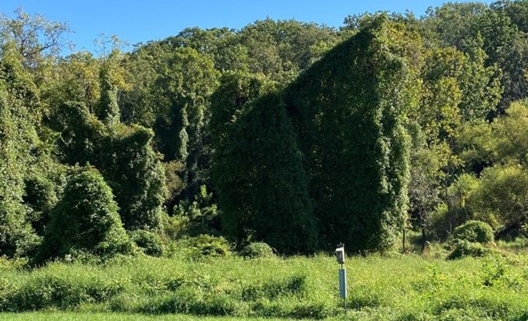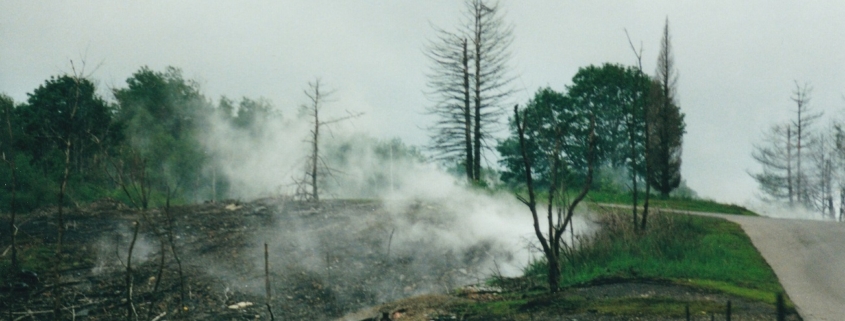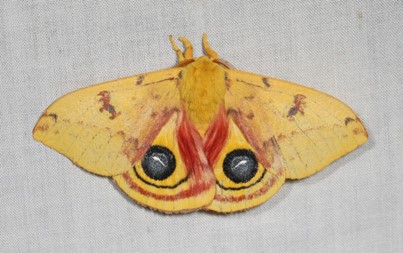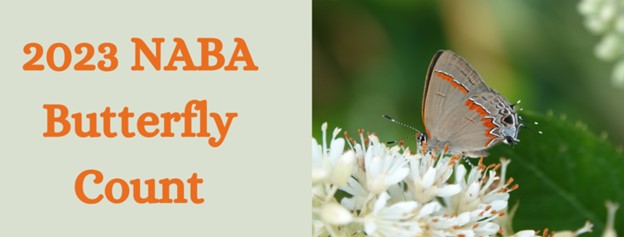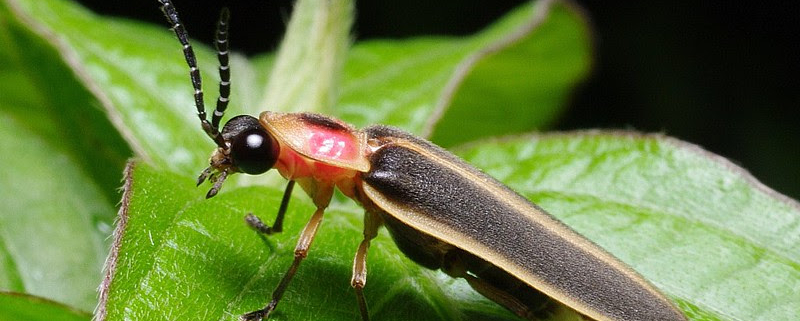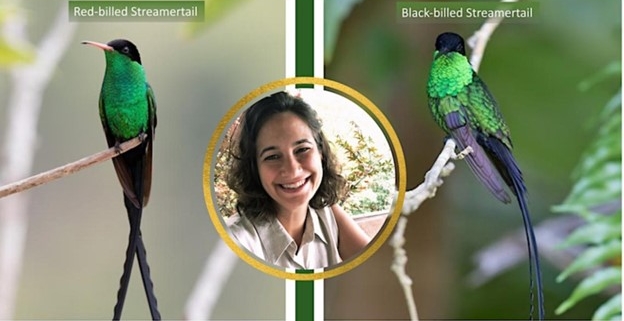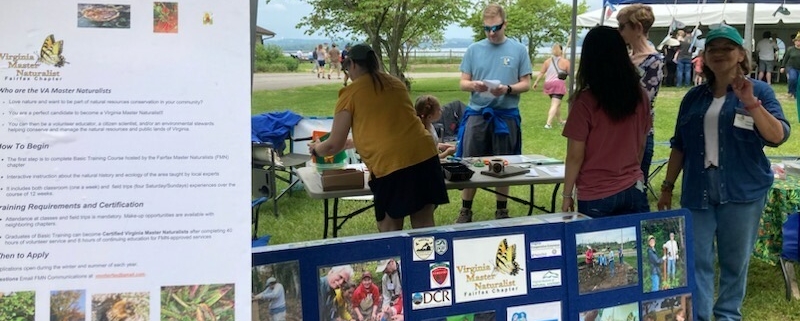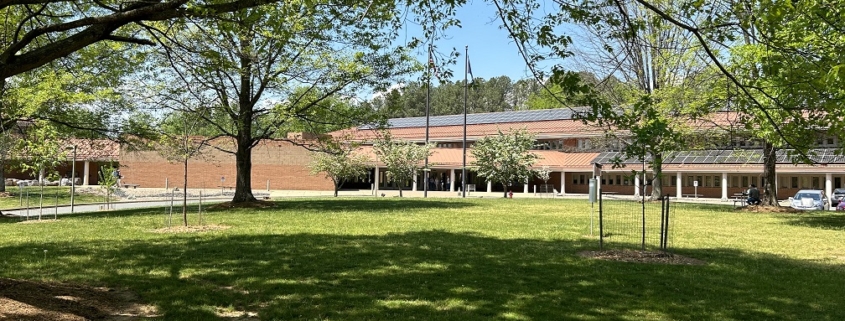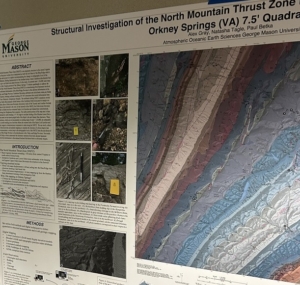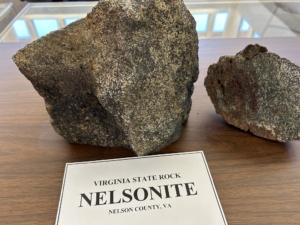Feature photo: A long-term underground coal fire produces a surface manifestation (steam) in Centralia, PA (June 2001), adjacent to the St. Ignatius cemetery. This is located about 3 miles from the ball lightning observation site.
Article, photo and illustration by FMN Stephen Tzikas
One of the rarest events in nature a Master Naturalist might encounter is ball lightning. Ball lightning is typically a small luminous ball hovering and moving just above the ground around the time of thunderstorms. Variations can exist. I surmise I once witnessed it, and as a scientist I immediately began taking mental notes of it as I observed it. I was sky gazing with friends. On July 24, 1999, at 10:15 PM, I observed a strange object materialize in front of me (less than 20 feet away). It moved upward and
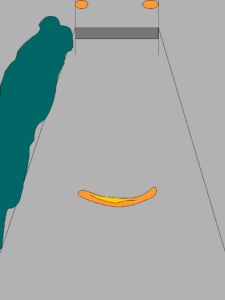
Illustration 1 by Author: My ball lightning encounter was in the shape of a whirling rod. Bushes are to the left of the abandoned road. Two streetlights are in the background with a concrete road barrier between them as it is a closed abandoned road.
forward (about half a foot), and dematerialized, in a short period of about 5 seconds or less. The object was a flamelike consistency and the same color as orange fire. It appeared 3 feet over the road pavement. The rotating bent-rod like shaped object had its long axis parallel to the ground, and was about 1 ½ – 2 feet in length, and 3 inches in width. It flickered slightly in color with a touch of yellow. My camera went dead when I tried to take a photograph of it.
It had just been raining that evening. The materialization and dematerialization of the plasma-like rod looked similar to the process in the original Star Trek TV series transporter to materialize and dematerialize. It was completely silent and I did not notice an odor associated with electrical activity (such as ozone). No heat generation was felt, nor did I experience any psychological effects.
I was in Mount Carmel, PA, on an abandoned road near the corner of Hillside Drive and S. Pine Street. The abandoned road extends from Hillside Drive to Rt. 61. It heads in the direction of the town of Centralia which had been abandoned due to an underground coal fire. My photograph of the fuming ground in Centralia is at the intersection of Locus Avenue (Rt. 61) and South Street (a pull off parking area adjacent to the St. Ignatius cemetery). My ball lightning observation was on a hill top, which might have some significance. Some of the reactive underground activity in Centralia could have driven the electric potential needed for the creation of the ball lighting to an uphill location such as where I was.
I’ve known people who have claimed to see similar activity, which in a broader classification not only includes ball lightning but other rare phenomena such as Earth lights and St. Elmo’s fire. One person was aware of such activity in the Hudson Valley of NY and kept alert for it during his sky gazing activities. He once photographed a floating ball shaped object with short tentacles. A trained observer will take care to eliminate common confounding objects such as illuminated insects and airborne dust that might reflect distant light sources, or be an artifact of the photographic instrument itself (flash or infrared beam). Nighttime photography and video recording, under different meteorological conditions and with different types of recording instruments, can have some interesting and unexpected effects. Another upstate NY observer told me that a faint ball lightning orb approached him and went through him. He noted a short “high sensation” similar to a strong “caffeine buzz.” He contended to have developed a skin rash from it.
Another person I knew in Leesburg, Virginia said he witnessed a small orb of ball lightning inside a home (a couple inches in diameter) that was moving toward him. He decided to touch it and the resulting shock left him unconscious for a couple minutes. Perhaps it came into the house unnoticed, as ball lightning is said to pass through glass windows easily. It can move with varying speeds but typically moves slowly such as the speed of a walking human.
According to some statistical investigations, ball lightning had been seen by 5% of the population of the Earth. I would have thought that 5% was quite a large number. But then again, since I have known a few people who have seen it, perhaps 5% is not unreasonable. Moreover, almost all of us have seen another spectacular type of atmospheric manifestation called the auroras. If you see ball lightning please take care and don’t be tempted to touch it. It is an electrical phenomenon that can electrocute you if it is of high enough voltage. The two people I knew were lucky to survive the bout of unconsciousness and the skin issue with their respective encounters. Since it is electrical it also has the ability to be attracted to you as if you were a lightning rod. Use some caution and maintain your distance. See the internet for images and videos of ball lightning that were recorded.


